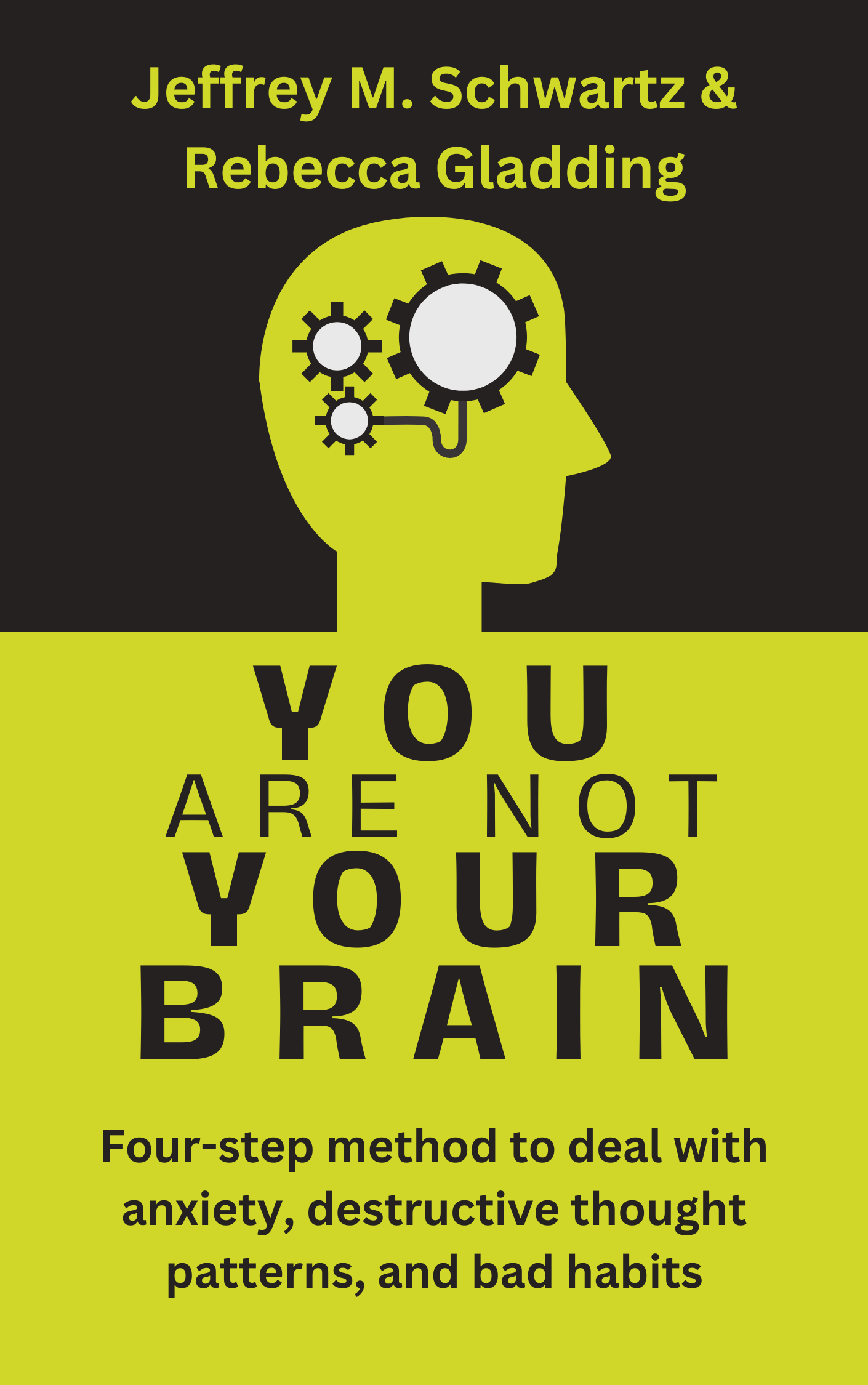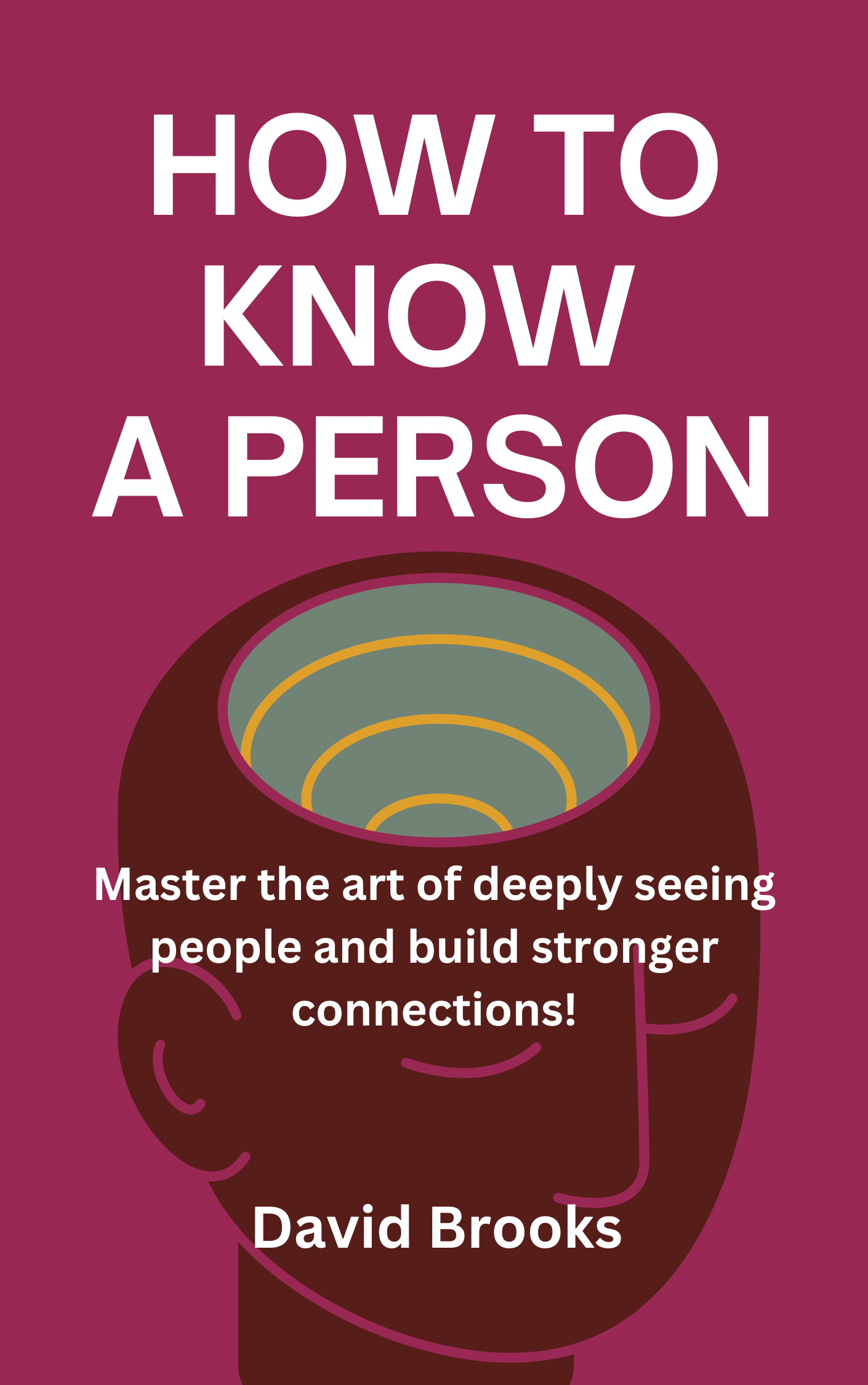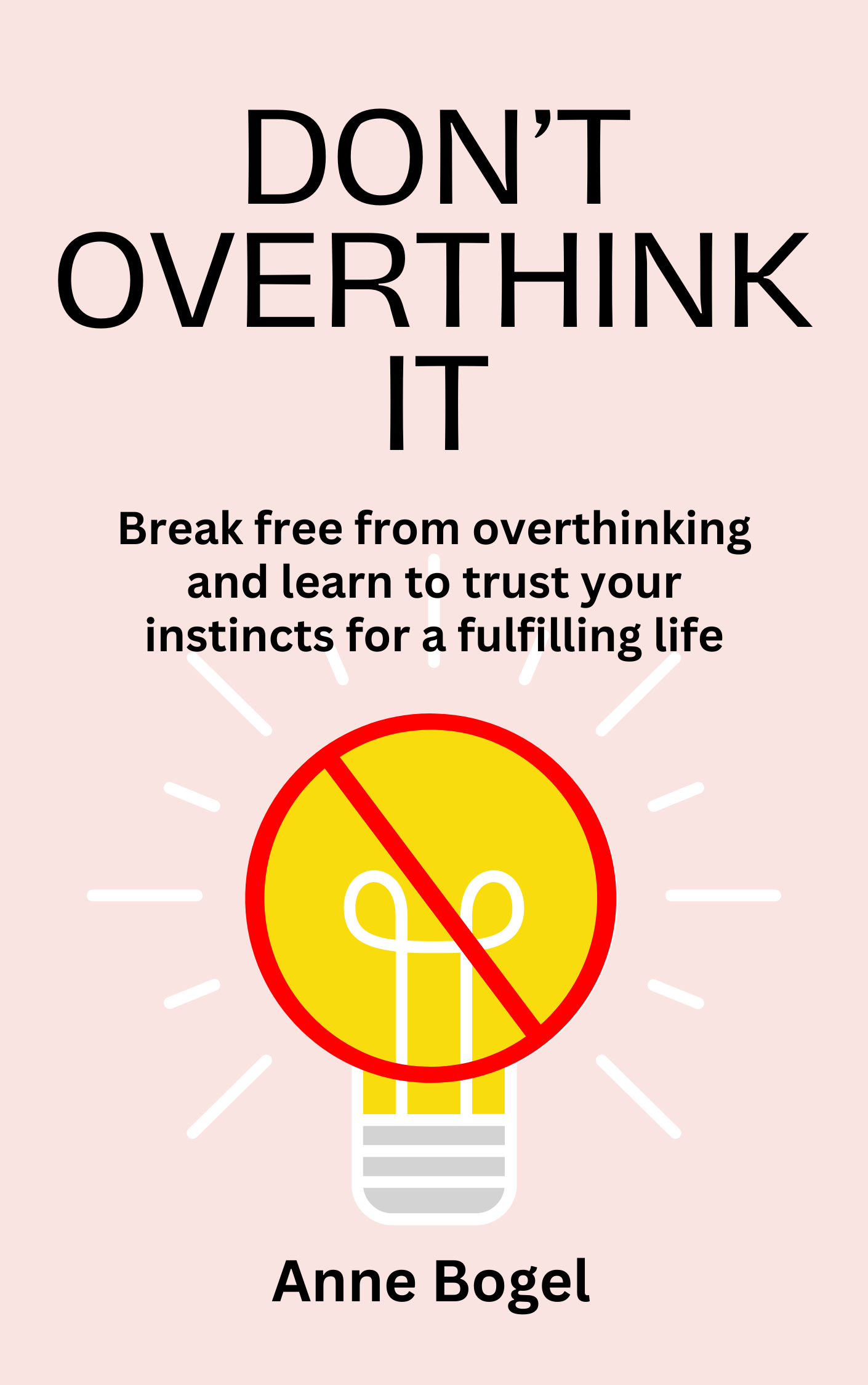Introduction
Do you often feel an onslaught of intrusive thoughts or anxiety? Do you listen to your brain when it tells you that ‘you are not good enough’ or ‘you do not deserve happiness’? What if we tell you that these thoughts do not define you? Won’t believe us? How about if a doctor says this? The authors Gladding and Schwartz are trained medical doctors with years of expertise and they assert that these negative thoughts are basically deceptive messages sent by your brain, shaped by its neural wiring. The good news is that this wiring can be altered! Yay.
In their groundbreaking book, Schwartz and Gladding offer a four-step solution to help readers recognize and disengage with these dark thoughts and deceptive brain messages, get rid of unhealthy thought patterns, and embrace healthy habits. With relabeling, reframing, refocusing, and revaluing deceptive brain messages, you overcome neural pathways that distort reality and embrace healthier thinking. This scientific approach gives hope to those struggling with anxiety, low self-worth, or other distressing, recurring thoughts.
Before getting to those glorious 4 steps, let’s first clear up some key concepts. First up, understanding the deal with deceptive messages.
Your Brain’s Deceptive Messages Are Not Reality: You Can Learn To Overcome Them
Our mind loves to wander, often to dark place of negative thoughts, wacky impulses, anxiety, and stress. Research in neuroscience shows that these negative thoughts are nothing but deceptive brain messages that create destructive habits hampering our growth and blocking our march towards our life goals leaving us feeling unfulfilled.
And Even successful people face this! The authors give the example of one of their clients, a Broadway performer, to illustrate this. This gifted performer led a successful life from the outside but struggled with negative self-talk after a difficult experience took hold. Schwartz came to the man’s rescue and guided him to evaluate his mind and discovered that the negativity was rooted in some childhood experiences - specifically from an incident when he was paralyzed with nerves in front of a popular producer. The experience reshaped his brain’s neural network and initiated a negative loop. Before he knew it, he got more and more stuck in it; giving importance to all that his brain was throwing at him. His stage fright got worse, he skipped auditions, and consequently, internalized feelings of failure and unworthiness – ignoring the good, focusing on the bad!
It is a sad reality for many. Our chronic response of believing the brain’s lies makes us miserable. But those lying thoughts are not your reality, or anybody’s for that matter. We can guide our brain. And remember - our DNA is not calling all the shots here. You've actually got the power to override your genetic tendencies through conscious choices and discipline.
But before we see how we can do that, let’s look at how your behavior may actually be reinforcing all this negativity in thought and action.
Your Coping Behaviors May Be Encouraging the Deceptive Brain Messages
Deceptive messages set off actual, distressing physical sensations and emotions - as if the lies are 100% real! In return, we find coping mechanisms to deal with them. Take the "I'm too fat" thoughts. For some, that sparks extreme urges to over-diet or purge. Literally driving them into harmful patterns that wreck their health and self-worth.
Or there are other, equally damaging, coping mechanisms. Like ‘feeding the monster’. Let's explain it this way. For example, let's say your brain tells you "No one loves you." Ever wonder why we turn to bad habits in response - like smoking or vaping, even when we know that route just leads downhill? We'll tell you why! It's because they DO make us feel a little less awful. At first anyway.
But because our brains actually start linking that bad habit to a fleeting "high" of relief, it gets wired in as the go-to coping mechanism. Before long, we are stuck chasing that brief high, trying to escape emotional pain that our brains created in the first place! We feed the monster! Get it?
This happens every time we buy into the brain's lies.
The authors also share a real-life example that shows this cycle in action: They had a client, a stressed out executive over-burdened from people asking his advice. To find relief, he started drinking a glass of wine at night. At first, the wine eased his work stress but soon one glass no longer did the trick. Meanwhile, his brain connected having a stressful day with needing wine to unwind. The temporary relief kept his stress-drinking habit locked in, and the negative effects grew. See how it works?
There is a way out, though. You can rewire your brain’s neural pathways. Or as scientists call it - self-directed neuroplasticity.
Self-Directed Neuroplasticity Is An Easy Answer To Reclaim Your Mind And Change Your Life!
Let’s simplify the word first. ‘Neuro’ is ‘neurons’ and ‘plasticity’ means the ‘quality of being easily molded’. So, self-directed neuroplasticity means that you yourself can direct your brain to alter its synaptic pathways and rewire the neural circuit. In other words, you can control the brain’s innate ability to create and change its neural connections.
Let’s take a simple example here. Morning walk. For the first few days when the morning alarm goes off, you probably go back to sleep. However, if by sheer will, you chose not to listen to the brain saying "go back to sleep" and woke up early for even a week, waking up will gradually become easier and after a few months, the same brain sends you a message to wake up early! That’s self-directed neuroplasticity right there! Pretty cool, huh?
So, as per self-directed neuroplasticity, an individual can literally re-train their brain. Albeit with the help of a few well-researched techniques. Basically, the use of focused attention whilst disassociating with the brain's deceptive messages. A woman who had a stroke was able to do just that. Half her body was paralyzed and in rehab, she wanted to recover quicker but those little lying brain voices kept whispering "Just quit, this is useless." With some help from those around her, she focused her attention on calling their bluff rather than believing those lies. Instead she pushed for positive responses. And would you believe it - brain scans showed she actually rewired her own brain. New pathways formed that enabled her paralyzed muscles to start working again! That means, her choices, her attention, and her sheer determination shaped her brain in ways that enabled her to bounce back from that stroke. Mind blown!
Next, take a quick look at what this awesome four-step methodology behind self-directed neuroplasticity is.
The Four-Step Methodology Explained!
Rewiring your brain! Sounds technical and complicated. But, it’s not! Just understand and follow the Four-Step method, and you’ll change your biology and your life! We’ll make it simple. The Four-Step methodology is, conveniently, based on 4 R’s - relabel, reframe, refocus, and revalue. They help you break bad habit circuits and build good ones instead.
Before we get to those in detail, we must first introduce two more concepts related to neuroplasticity. The first one is ‘Hebb’s Law’. What you need to remember about Hebb’s Law is this: neurons that fire together, wire together. Which means one neuron influences the other neuron, and co-activation of neurons forms a neural pathway, leading to the formation of long-term memories. The brain cells that are repeatedly activated or ‘fired together’ at the same time form a new circuit or become ‘wired together’. You’ve forged a new neural pathway in your brain and consequently formed a new habit.
The second concept is the Quantum Zeno Effect, aka The Turing Paradox. Inspired by Zeno’s Paradoxes, it says that focused observation of a system can freeze it at a particular stage. What that means in our context is that by focusing a lot on certain brain messages, you can keep those messages active long enough for your brain to help forge those new neural pathways permanently. So if you concentrate on the good thought patterns you want, your brain will get better at thinking those good thoughts on its own.
Fair warning: you can't really stop those deceptive brain messages. Trying to make them go quiet almost never works. So don't even try. The Four Steps just show you what to do instead of spiraling. They teach you how to ignore the bad and pretend you didn't hear them.
All the background info is solid now. It’s time to meet the stars of the show. The Four R’s!
Step 1 – Relabel
The key to initiating relabeling is mindfulness. It’s the foundation of all four steps, if you really look at it. Mindfulness is paying attention, on purpose, to the present moment without judgment. Remember, mindfulness is not just a state of mind. Being mindful is like a constant activity, where you are constantly aware or mindful of yourself, your body, your thoughts, and your environment. Cultivating mindfulness take effort. Just frequently practice it by bringing your attention to your body movements, sensations, cravings, breath, and whatever you can notice. Cool?
Now, let’s understand relabeling! Relabeling is exactly what the word says. We relabel our thoughts. Firstly take note of your negative thoughts at any moment. Next, take those deceptive brain messages and call them what they really are. Like "Hmm, that's just my inner critic talking." Almost like we're observers of our own thoughts rather than being controlled by them. This takes away some of their power over us. It's easier to let go of a thought when we see it clearly for what it is - just an exaggerated or critical thought, rather than an absolute truth.
Here’s how mindfulness can help you with it. Begin by finding a quiet place to sit with your eyes closed, focusing only on your breath as it goes in and out. As you do this, thoughts will start popping up, and that's okay - just notice them without judgment. Notice when a deceptive brain message arrives, watch it with full awareness and acknowledge it. Do not pay heed to the content of those messages, your task is to just become mindful of the negative messages. And then, assign label notes to them. Like ‘anxious thoughts’ or ‘overthinking’. This will help you disassociate with them, and increase awareness that you are not what your brain is telling you repeatedly.
Take John. John tended to harshly criticize his work performance, thinking things like "I'm just a terrible employee." As soon as he noticed this self-attacking pattern, he practiced relabeling it as "self-criticism happening now." Simply identifying the destructive thought progression as criticism rather than truth created enough mental space for John to get a grip and move on! Be like John, dears!!
Okay, so that’s relabeling. The second R is Reframing.
Step 2 – Reframe
Step 3 – Refocus
Once you’ve successfully relabeled and reframed your inner reality, refocusing comes into the picture. Refocusing implies taking your attention towards healthy and wholesome thoughts, actions, and habits.
Consider a scenario when you sit at your desk to study or work and a wave of negative thoughts engulfs you. Oddly enough, you might have noticed that when that happens, you always try to distract yourself. Never accepting, always escaping. Not the way to go, people! Remember that you’re trying to change the neural circuitry of your brain. Repressing a thought means putting in the attention that feeds these thoughts. This will only create negativity. Refocusing, on the other hand, will let it dissipate by itself.
Refocusing is knowing that our mind is easily distracted and using that tendency to refocus your energy on productive behaviors and habits. Refocus properly, and you can do something productive in your day, even while going through deceptive brain messages. You know what would be real helpful? If you create a list of useful and wholesome go-to activities and keep it with you all the time. You’ll be ready to shift your attention and mood, anytime, anywhere!
Want some ideas? You can include tidying your space, preparing a healthy snack, or even journaling! That’s a good start.
Before we talk about the last step, it is critical to understand that refocusing is not escaping or ending the deceptive brain messages. You are not repressing anything or distracting yourself. Instead, you are constantly mindful of the false nature of such messages while channeling your energy into positive activities.
Now! Who’s excited for Step 4?
Step 4 – Revalue
The last step! This allows you to reclaim your life and forge a confident self-image. You see, indulging in negative thought patterns over and over again will definitely impact your self-image and sense of self-worth. And that’s why self-directed neuroplasticity is incomplete without this step. So, what’s revaluing about? Simple: we revalue our perception of ourselves. Which means, rather than buying into the distorted narrative that we are failures, frauds or not good enough, we consciously decide to assign more positive value to ourselves. We are always so much more than limiting stories we are told or tell ourselves.
The key to revaluing is recognizing that you don’t have to change who you are at your core; you must change what you believe about yourself. And you must recognize that your deceptive brain messages make you see yourself from a negative side only. When you master the fourth and final step of the Four-Step method, you’ll automatically learn to take a broad view of things while ignoring deceptive brain messages.
The authors share the example of a client who was a bit obsessed with perfectionism. The said client became fully aware of her flawed behavior after going through the Four-Step process. It also helped her realize that this obsessive perfectionism severely controlled her life, and she was stuck monitoring her mistakes. Eventually, she revalued her experiences. She considered how she would soothe a dear friend who struggled like she did. And just like that, she was able to revalue her own perfectionistic thoughts from that compassionate, nurturing lens of a friend. Smooth, right? Now, the question is, how do YOU do that?
The best thing is to take a broad view of your life, with an optimistic and compassionate mindset. The next time a deceptive thought pops up in your mind, make choices and decisions from a peaceful and self-loving place. Learn to ignore the choices that are rooted in deceptive beliefs. Always remember that you are not your brain! You have the power to transform your life this very instant!
Chapter 11
Details coming soon.
















